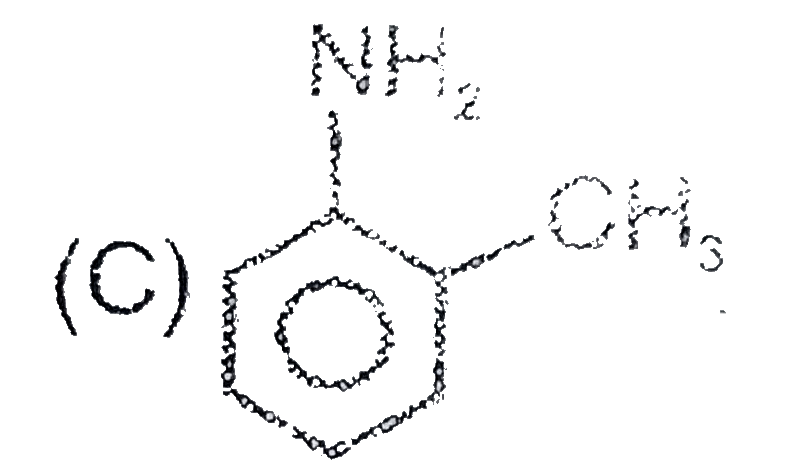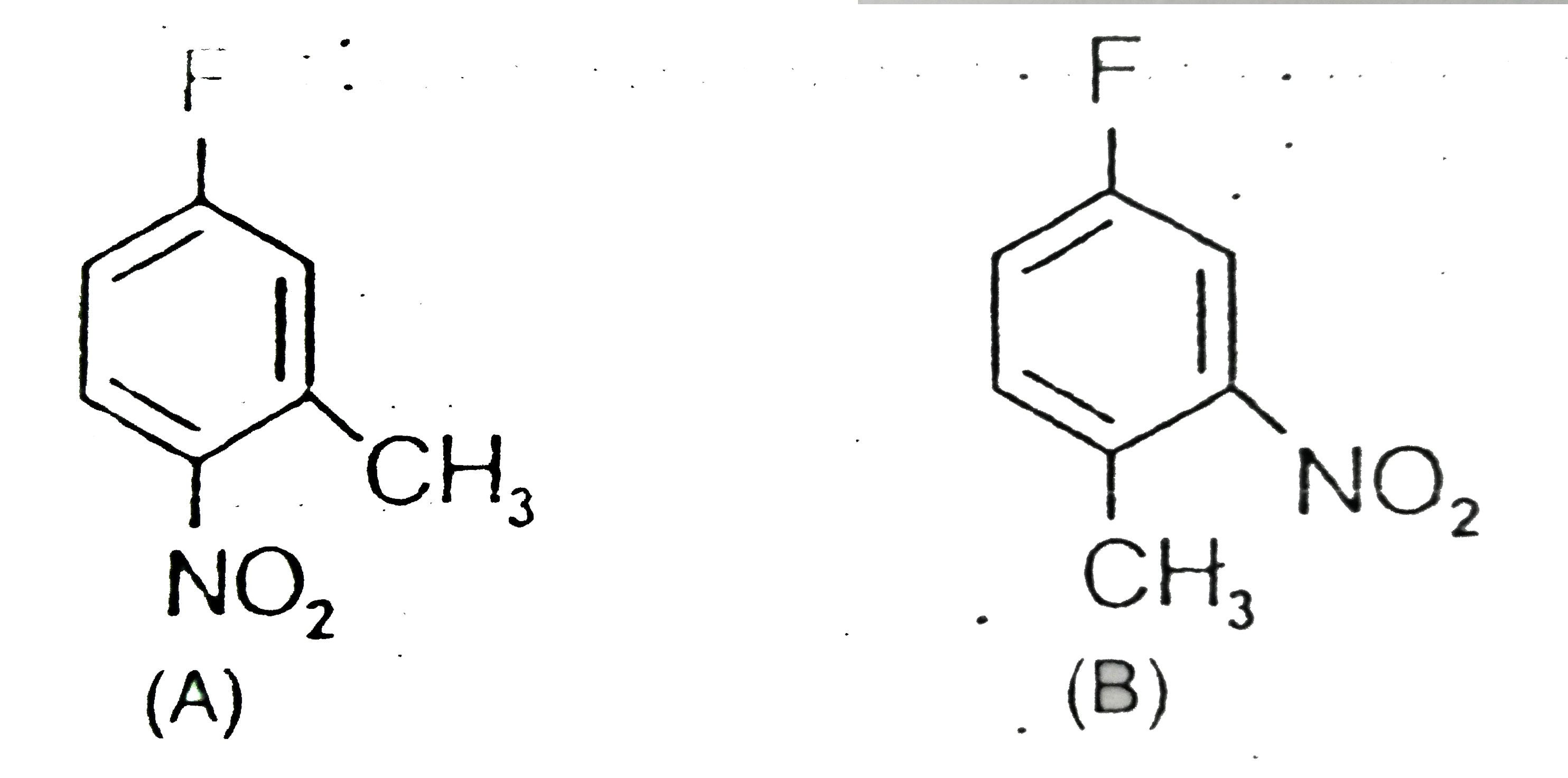Which of the following compound will give smell of NH3 with conc. NaOH.
CH3−CH2−C∣∣O−NH2
CH3−C∣∣O−CH2−NH2

CH3−CH2−C∣∣O−OH
The correct Answer is:A
To determine which compound will give the smell of ammonia (NH₃) when treated with concentrated sodium hydroxide (NaOH), we need to analyze the behavior of different types of compounds when they react with strong bases.
1. Identify the Compounds: The question mentions several compounds, including an amide, an amine, and possibly others. We need to focus on their structures and functional groups.
2. Understand the Reaction with NaOH: When a compound reacts with concentrated NaOH, we need to consider how the functional groups will interact with the base. Specifically, we are looking for a reaction that produces ammonia gas.
3. Analyze the Amide Reaction:
- Amides (like propanamide) can undergo hydrolysis in the presence of a strong base.
- The reaction can be represented as:
RCONH2+NaOH→RCOONa+NH3
- Here, the amide is converted into a sodium salt of the corresponding carboxylic acid and ammonia gas is released.
4. Analyze the Amine Reaction:
- Amines do not produce ammonia when treated with NaOH. Instead, they may form an ammonium salt but do not release NH₃ gas.
5. Analyze Other Functional Groups:
- For carboxylic acids, the reaction with NaOH leads to the formation of a carboxylate salt and water, but no ammonia is produced.
- Other compounds may also not yield ammonia upon reaction with NaOH.
6. Conclusion: Based on the analysis, the only compound that produces ammonia gas when treated with concentrated NaOH is an amide. Therefore, the correct answer is the compound that is an amide.
Final Answer:
The compound that will give the smell of NH₃ with concentrated NaOH is the amide (option 1).
- Amides (like propanamide) can undergo hydrolysis in the presence of a strong base.
- The reaction can be represented as:
RCONH2+NaOH→RCOONa+NH3
- Here, the amide is converted into a sodium salt of the corresponding carboxylic acid and ammonia gas is released.
- Amines do not produce ammonia when treated with NaOH. Instead, they may form an ammonium salt but do not release NH₃ gas.
- For carboxylic acids, the reaction with NaOH leads to the formation of a carboxylate salt and water, but no ammonia is produced.
- Other compounds may also not yield ammonia upon reaction with NaOH.
The compound that will give the smell of NH₃ with concentrated NaOH is the amide (option 1).
Topper's Solved these Questions
- BOOK - RESONANCE ENGLISHCHAPTER - STRUCTURAL IDENTIFICATIONEXERCISE - Exercise - 2 (Part-I)10videos
STRUCTURAL IDENTIFICATION
- BOOK - RESONANCE ENGLISHCHAPTER - STRUCTURAL IDENTIFICATIONEXERCISE - Exercise - 2 (Part-II)8videos
STRUCTURAL IDENTIFICATION
- BOOK - RESONANCE ENGLISHCHAPTER - STRUCTURAL IDENTIFICATIONEXERCISE - Exercise-1 (Part-I)23videos
STRUCTURAL IDENTIFICATION
- BOOK - RESONANCE ENGLISHCHAPTER - STEREOISOMERISMEXERCISE - EXERCISE (PART III : PRACTICE TEST-2 (IIT-JEE (ADVANCED PATTERN))23videos
STEREOISOMERISM
- BOOK - RESONANCE ENGLISHCHAPTER - SURFACE CHEMISTRYEXERCISE - Section - 51videos
SURFACE CHEMISTRY
Similar Questions
Knowledge Check
- Question 1 - Select One
Which of the following compounds does not react with NaOH ?
ACH3COOHBCH3CONH2CC6H5OHDCH3CH2OH - Question 2 - Select One
Which of the following compound is differentiated by NaHCO3 as well as by NaOH ?
A B
B C
C D
D
Which of the following compound will given yellow precipitate on shaking with aqueous solution of NaOH followed by the addition of AgNO3 solution ?
View SolutionWhich one of the following compounds readily reacts will NaOH ?
 View Solution
View SolutionWhich of the following compound will not turn black on adding NH4OH to it ?
View SolutionWhich of the following carbonyl compound will give two products after reaction with NH2OH:
 View Solution
View SolutionWhich of the following metal(s) in liquid NH3 with low conc. Is not paramagnetic?
View SolutionWhich of the following compound gives a product with foul smell
when reacted with chloroform in presence of a alkali ?View Solution

